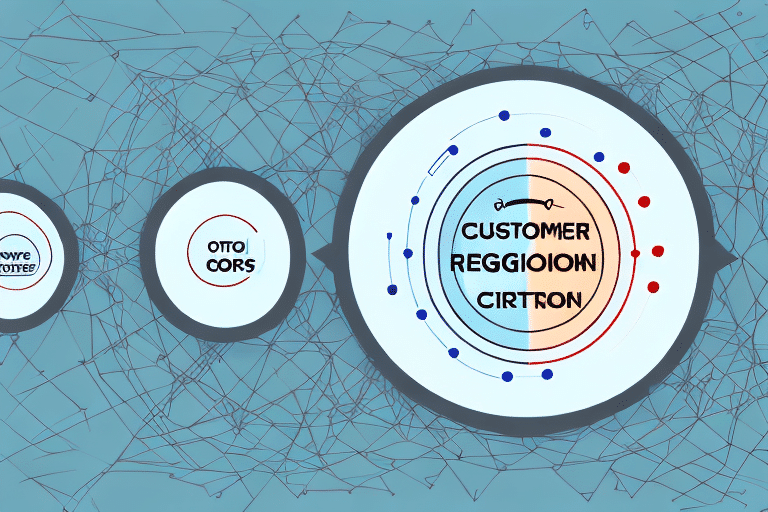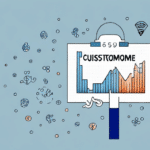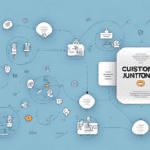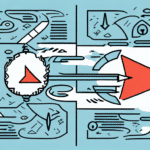Exploring the Costs of Customer Retention vs Acquisition
Customer acquisition and retention are two critical factors for any successful business. While customer acquisition brings in new revenue, customer retention enhances customer loyalty and increases the customer lifetime value. Both acquisition and retention efforts require strategic investments, and it is essential for businesses to balance the two to maximize ROI. In this article, we will delve into the costs of customer retention versus acquisition and explore various strategies to improve both efforts.
The Importance of Customer Retention in Business Success
Retaining existing customers is often more cost-effective than acquiring new ones. According to a study by Harvard Business Review, increasing customer retention rates by just 5% can lead to an increase in profits of between 25% and 95%. Customer retention goes beyond repeat business; it involves building and nurturing long-term relationships with customers by enhancing satisfaction, improving the overall experience, and reducing churn rates.
One significant benefit of customer retention is the potential for increased loyalty. When customers feel valued and appreciated, they are more likely to continue doing business with a company and recommend it to others, leading to positive word-of-mouth marketing. Additionally, retained customers provide opportunities for upselling and cross-selling, allowing businesses to offer additional products or services that align with customers' needs and preferences, thereby boosting revenue and strengthening the business-customer relationship.
The Benefits of Customer Acquisition for Small Businesses
For small businesses in their growth phase, customer acquisition is vital. Without a substantial base of repeat customers, attracting new customers becomes essential to increase the customer base and build brand awareness. Effective acquisition strategies enable businesses to diversify their customer base, mitigating risks associated with losing existing customers or facing market fluctuations.
Moreover, acquiring new customers allows businesses to gather valuable feedback, providing insights into customer preferences and areas for improvement. This feedback is instrumental in refining products or services, enhancing the overall customer experience. Additionally, successful customer acquisition can lead to increased word-of-mouth marketing, as satisfied new customers are likely to recommend the business to their network, creating a snowball effect of growth without significant additional marketing expenses.
Strategies for Improving Customer Retention Rates
Enhancing customer retention rates is crucial for long-term business success. Here are some effective strategies:
- Loyalty Programs: Implementing rewards or loyalty programs incentivizes customers to continue their patronage.
- Personalized Experiences: Offering tailored experiences based on customer preferences can increase satisfaction and loyalty.
- Exceptional Customer Support: Providing prompt and effective customer support addresses issues quickly, enhancing the overall customer experience.
- Feedback Utilization: Actively seeking and using customer feedback to improve products and services demonstrates a commitment to customer satisfaction.
- Strong Brand Identity: Developing a consistent and memorable brand image fosters a deeper connection with customers.
Implementing Loyalty Programs
Loyalty programs reward customers for their continued business, making them feel valued. For example, Starbucks Rewards offers personalized rewards based on purchase history, encouraging repeat business and fostering loyalty.
Enhancing Customer Support
Exceptional customer support can significantly reduce churn rates. Businesses should ensure that their support teams are well-trained, responsive, and capable of resolving issues efficiently.
Understanding the Lifetime Value of a Customer
The Customer Lifetime Value (CLV) is a metric that represents the total revenue a business can expect from a customer over the duration of their relationship. Understanding CLV allows businesses to allocate resources more effectively and tailor retention strategies to maximize ROI.
Calculating CLV involves considering factors such as purchase frequency, average transaction value, and the duration of the customer relationship. By analyzing CLV, businesses can identify their most valuable customers and develop targeted strategies to retain them, such as personalized marketing campaigns or exclusive offers.
Calculating CLV
CLV can be calculated using the formula:
CLV = (Average Purchase Value) x (Purchase Frequency) x (Customer Lifespan)For instance, if a customer spends an average of $100 per purchase, makes 3 purchases a year, and remains a customer for 5 years, the CLV would be $1,500.
Calculating Costs and Measuring ROI
Understanding the costs associated with customer acquisition and retention is essential for evaluating ROI. Here's how to approach it:
Cost of Customer Acquisition (CAC)
CAC includes all expenses related to acquiring a new customer, such as marketing and sales costs. To calculate CAC, sum all acquisition-related expenses and divide by the number of new customers acquired.
CAC = Total Acquisition Costs / Number of New CustomersComparing CAC and CLV
Comparing CAC to CLV helps determine the profitability of acquiring new customers. Ideally, CLV should be significantly higher than CAC to ensure sustainable growth.
Key Performance Indicators (KPIs)
Measuring ROI involves tracking KPIs such as:
- Customer Churn Rate
- Customer Satisfaction Scores
- Repeat Purchase Rate
- Referral Rates
These metrics provide insights into the effectiveness of retention and acquisition strategies, enabling businesses to make informed decisions.
Leveraging Data Analytics and Trends
Data analytics plays a pivotal role in optimizing customer retention and acquisition strategies. By analyzing customer behavior and preferences, businesses can tailor their approaches to meet specific needs and anticipate future trends.
Identifying Customer Segments
Data analytics helps identify distinct customer segments based on behavior, preferences, and demographics. This segmentation allows for more targeted and effective marketing campaigns.
Predictive Analytics
Using predictive analytics, businesses can forecast customer behavior, such as future purchases or potential churn, enabling proactive measures to enhance retention.
Enhancing Customer Experience
Analyzing feedback and engagement metrics helps identify areas for improvement in the customer experience, ensuring that businesses address pain points and exceed customer expectations.
Future of Customer Retention and Acquisition in the Digital Age
The digital landscape is continuously evolving, presenting new opportunities and challenges for customer retention and acquisition. Emerging technologies and shifting customer behaviors necessitate adaptable and innovative strategies.
Artificial Intelligence and Machine Learning
AI and machine learning facilitate personalized customer experiences by analyzing vast amounts of data to predict preferences and behaviors, enabling businesses to deliver tailored recommendations and services.
Social Media Engagement
Social media platforms provide avenues for engaging with customers in real-time, fostering community building and enhancing brand visibility.
Omnichannel Strategies
Implementing omnichannel strategies ensures a seamless customer experience across all touchpoints, whether online or offline, enhancing satisfaction and loyalty.
Data Privacy and Security
With increasing concerns about data privacy, businesses must prioritize the security of customer data. Transparent data practices and robust security measures build trust and credibility.
Conclusion
Understanding the costs associated with customer retention versus acquisition is crucial for maximizing ROI and ensuring sustainable business growth. By implementing effective retention and acquisition strategies, leveraging data analytics, and adapting to emerging trends, businesses can build strong, long-term relationships with customers, increase revenue, and thrive in the digital age.




















